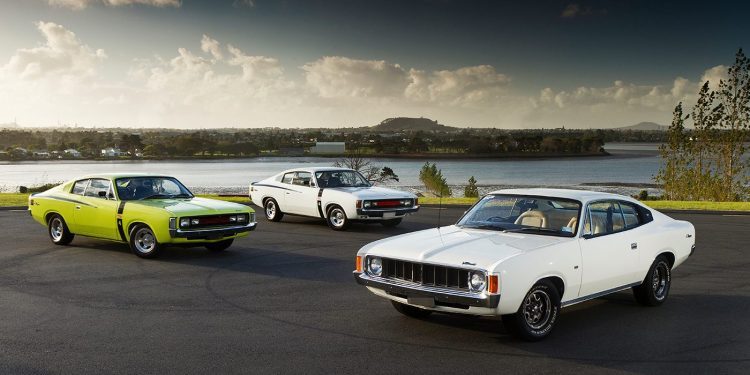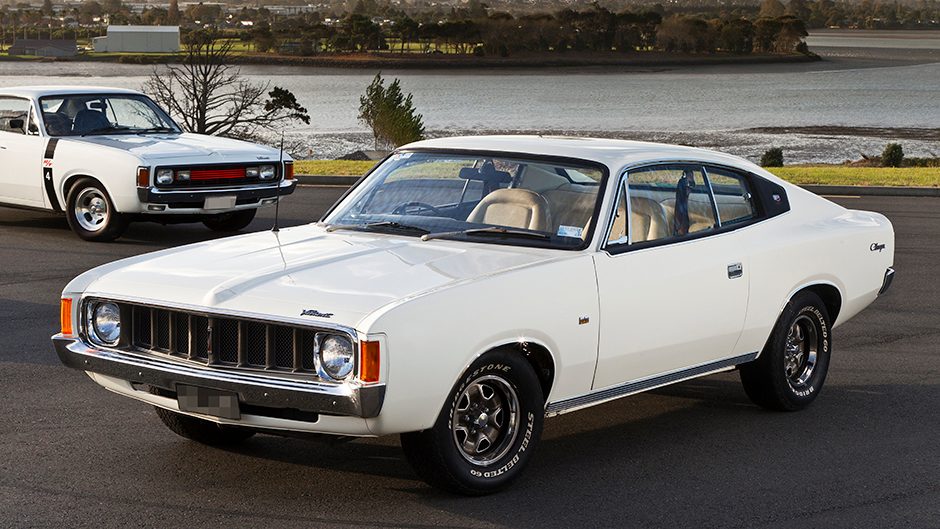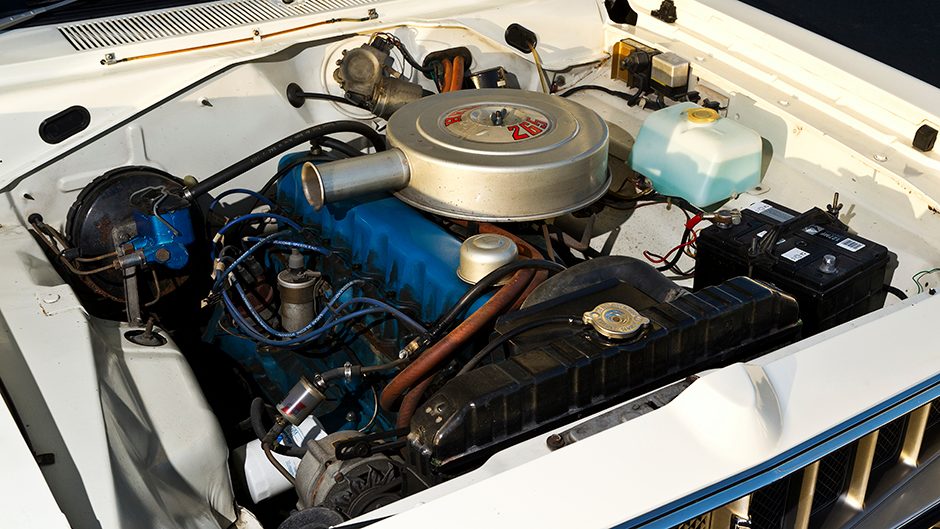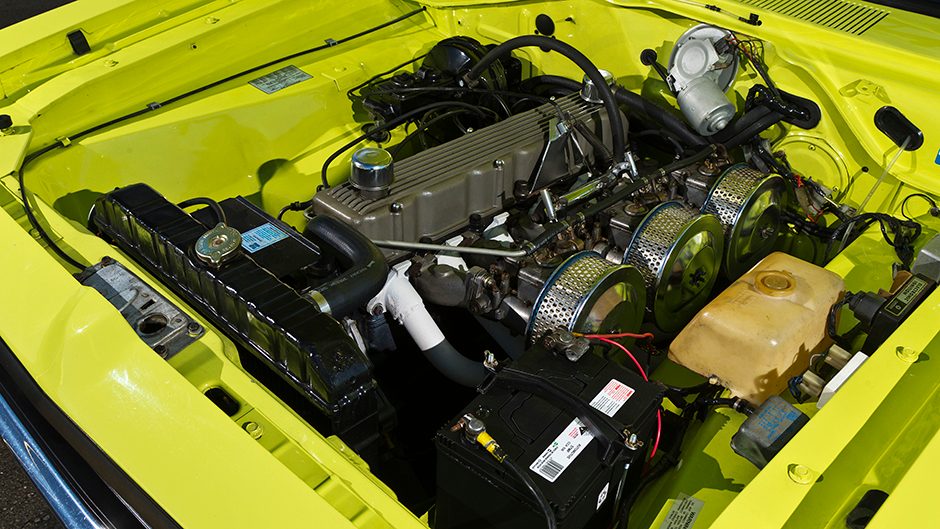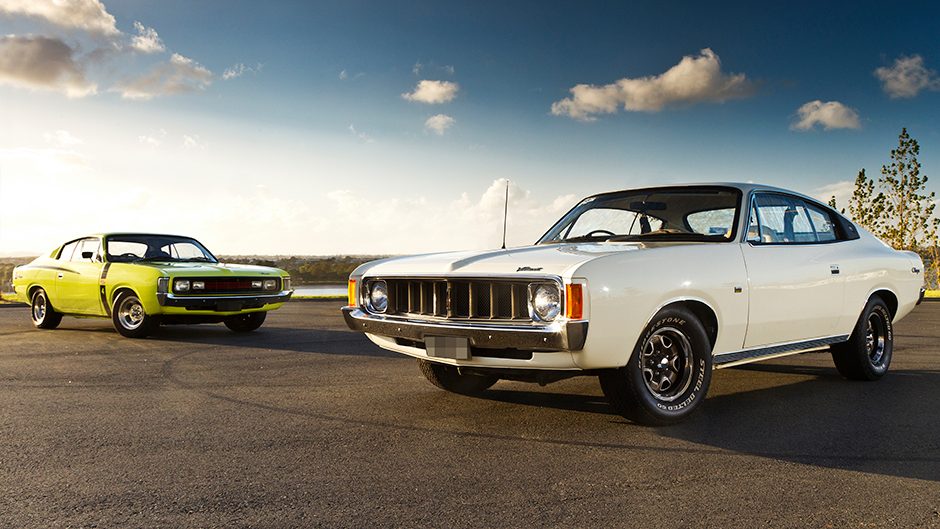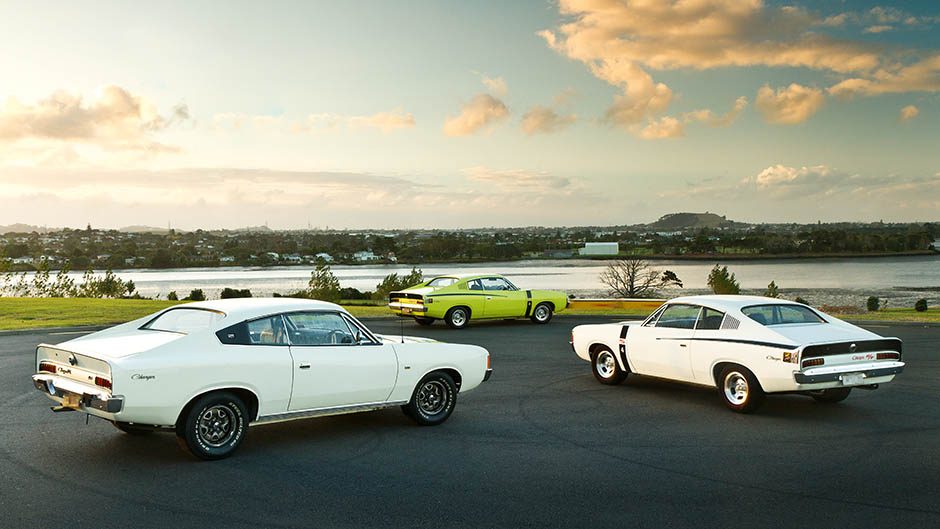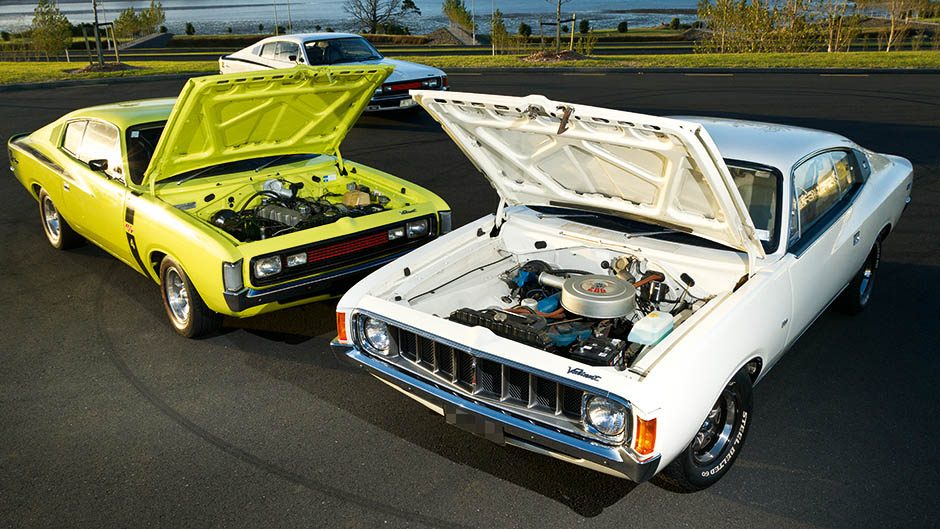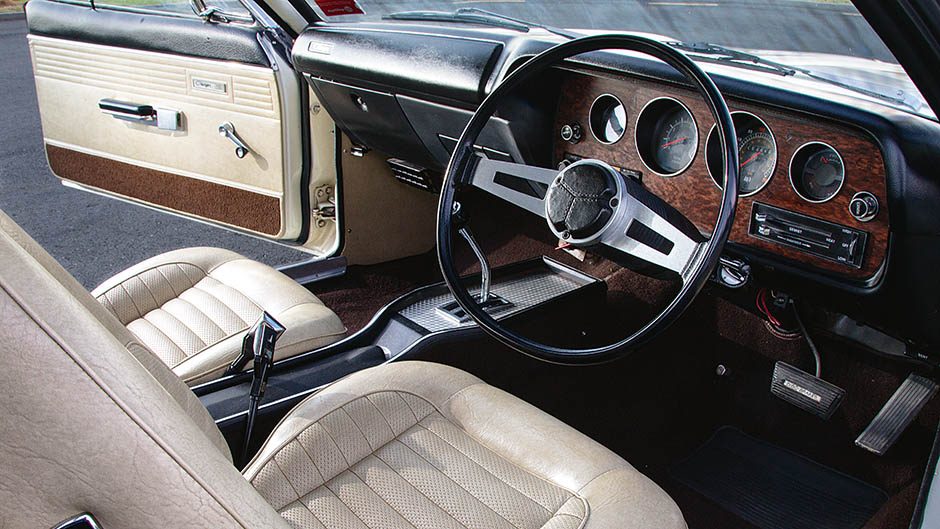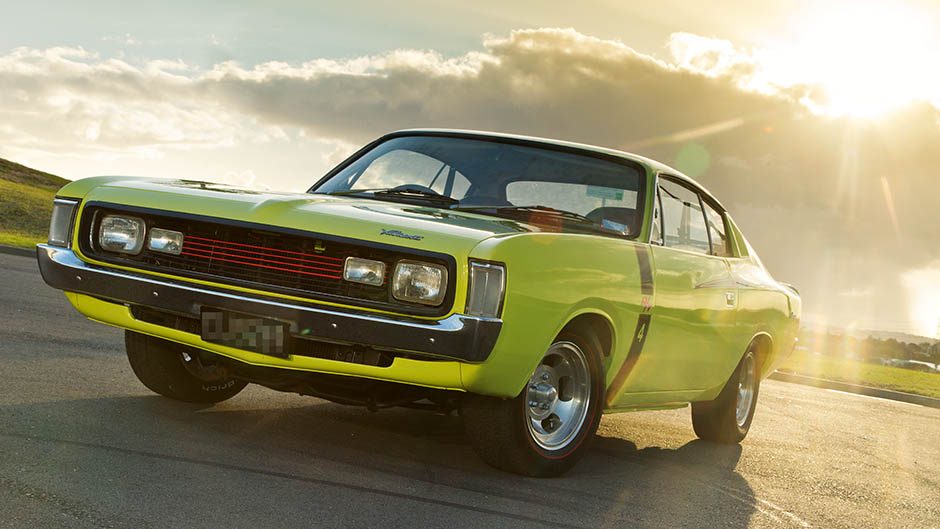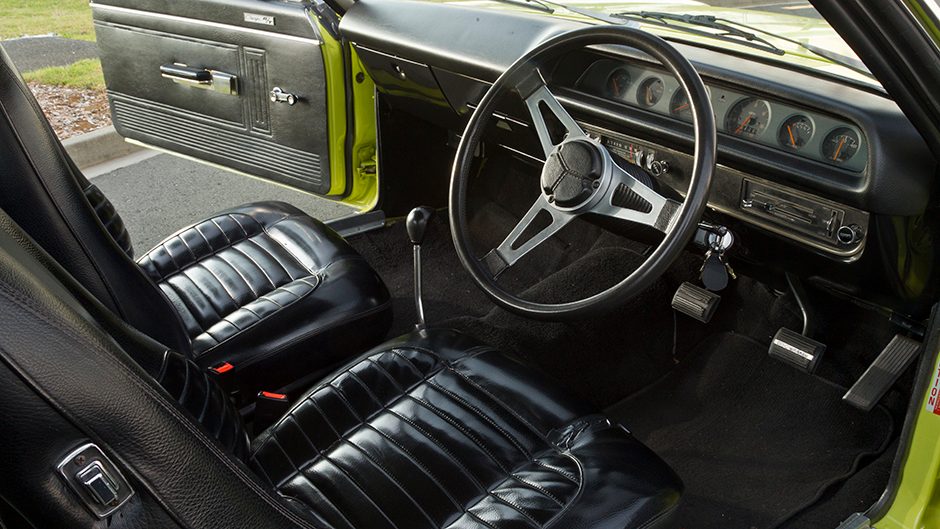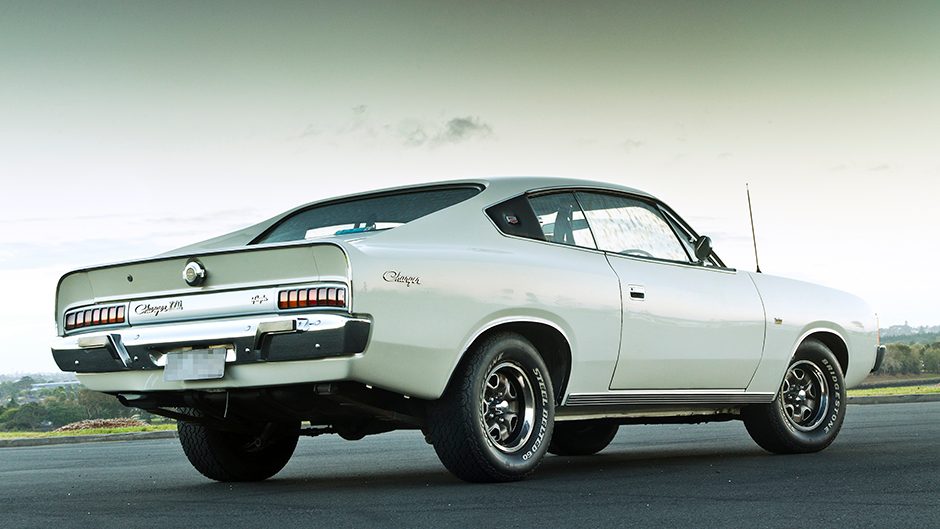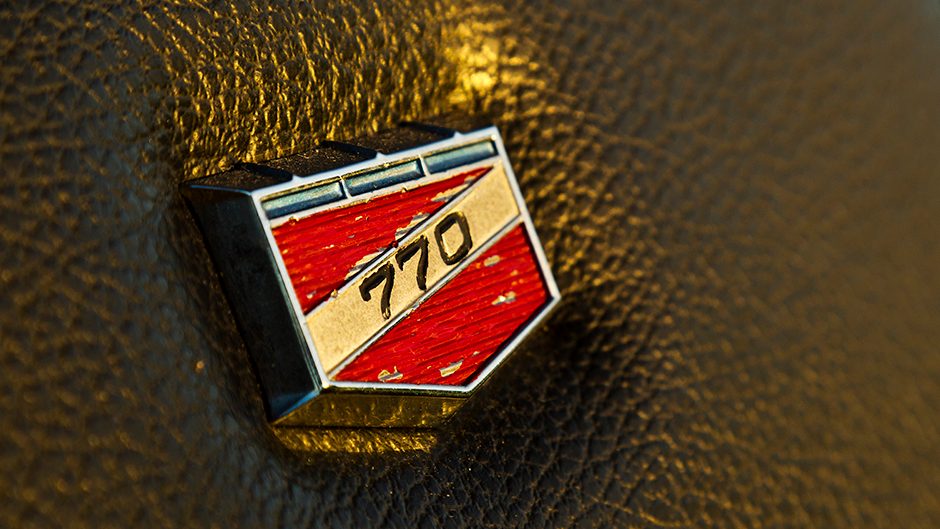1974 Chrysler Valiant Charger 770 & 1971 Chrysler Valiant Charger E49
Words Stu Owers | Photos Tom Gasnier
Recalling the days when chargers ruled the race tracks and the dreams of young teens.
If you weren’t living in New Zealand in the 1970s, it would be hard to imagine just how exotic cars like Chrysler’s R/T Charger were at the time. It wasn’t just that the R/T cost plenty, you also had to have connections to get one, as well as a tasty trade-in. Today’s car market couldn’t be more different. Back then, successive governments had encouraged a local assembly industry which was protected with restrictions and taxes on imported cars. Production capacity meant the assembly plants only produced a small range of models. While these companies invested heavily in New Zealand and provided work for thousands, effectively, new car buyers were paying a premium to prop these businesses up. As we discovered later when the market was deregulated, it was cheaper to import cars and these plants were forced to close.
The major industry players in the seventies were the big three of GM, Ford and Chrysler. The latter was represented here by Todd Motors. In 1972, the Wellington based firm decided to chance its arm and assemble a mid-range version of the Valiant Charger. It would mean that there was something other than a sensible family car readily available in the showroom. The ‘770’ version of the Charger caused a sensation when it launched into our conservative market. Todd Motors specified them with nice wheels, the larger 265 cubic inch six-cylinder (instead of the usual 215 cu inch) and a more upmarket interior. For the VH model, the NZ-built 770 came only with the three-speed auto. Priced reasonably at around $5000, they initially sold well, especially after their image was boosted by a string of victories in the local Benson & Hedges 500 endurance races.
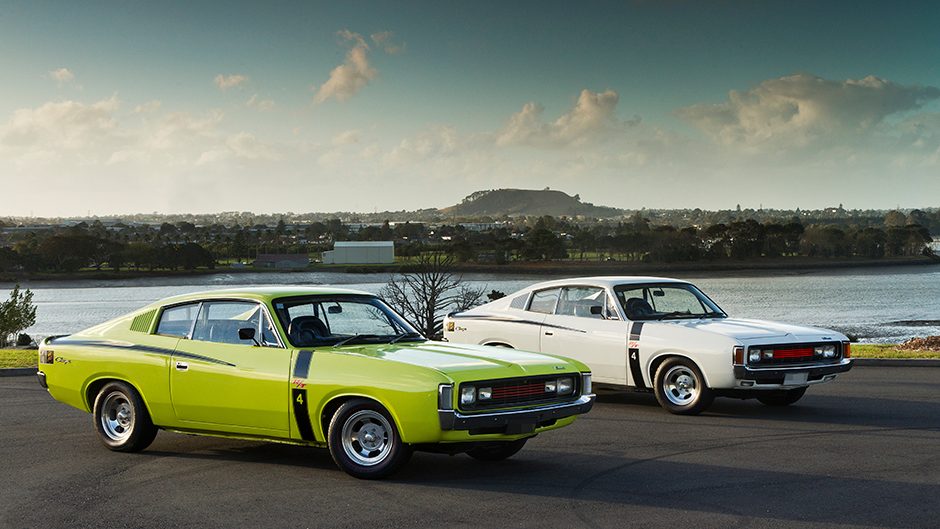
The competition for the Charger 770 was all but non-existent. Holden Monaros and Falcon GTs were imported in small numbers while it was a few years before GM decided to assemble the four-door HQ Monaro and Ford made a small run of dull, six-cylinder XA Falcon coupes. To my eyes, the Charger was the best looking car on the market at the time. It had many American styling influences and had even proven itself on the race track. I remember reading about the R/T versions in the Australian car mags. They were available in wild colours while the triple Weber carburettors hanging off the big six were only ever seen on dedicated race cars. The acceleration times being reported for the 0-60mph sprint were in the low six-second bracket while the standing quarter time of 14.4sec was the stuff of boyhood dreams. They were as fast as they were good looking. The first model, the VH, in R/T spec was designated the E38 and had a three-speed manual. The later version, still in the VH body style, was given a four-speed gearbox and was designated the E49. Arguably, the E49 is the most sought after of those 70s Chargers and in Australia, a well preserved example will sell for over $A200,000.
Only a few of these R/T Chargers trickled into New Zealand. Most of them were destined for the race track and our production racing series which, thanks to a rule change, allowed imported cars to compete alongside NZ-assembled models as well. While the Charger never covered itself in Bathurst glory, in NZ its record was different thanks to the clever driving and engineering preparation of Timaru’s Leo Leonard, among others.
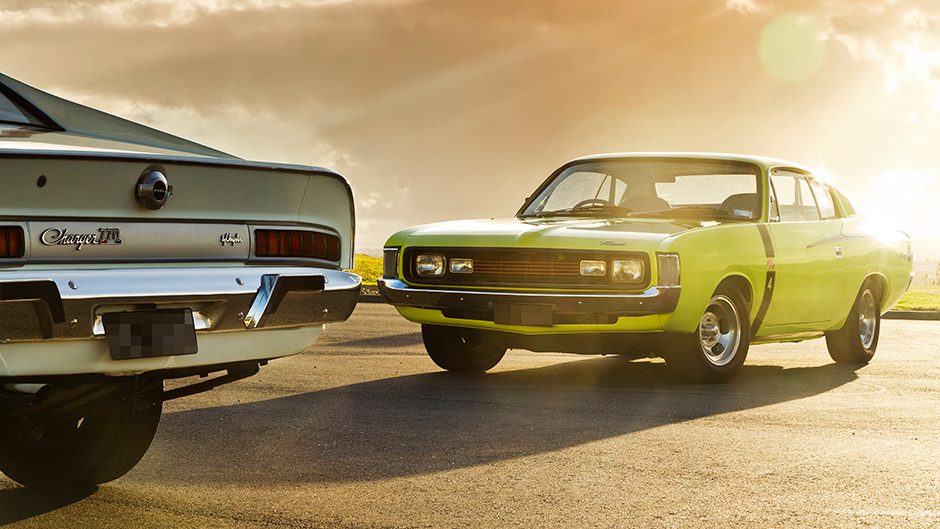
The three Chargers that we present here transport me back to the days of big moustaches, paisley shirts, platform shoes and jeans with enormous bell bottom flares. While Tom was taking the photos, I took a look inside the big 770. I was struck by how simple and basic they look compared to today’s cars. These vehicles were typical of their era with vague recirculating ball steering and floaty torsion bar suspension. They were also thirsty, even by the standards of the 70s, but they still have their square-jawed good looks and, for me, more than a touch of glamour. The white 770 model is the face-lifted VJ version. It’s a NZ assembled car and was bought brand new by the current owner, Terry, in 1974 for $5550. It still has the original dealer sticker on the back with a genuine 105,000km on the clock. The stars of the show are the two E49s. I was especially taken with Rob’s bright green car. What an outrageous colour!
The high-backed seats surprised me with their squishy softness. It was like sinking down into a spongy laz-y-boy arm chair. That’s so unlike today’s firm supportive seats. The view through the windscreen is dominated by a massive flat bonnet that looks big enough to land a helicopter on. The E49 starts and idles in a lumpy, cammy fashion but without fuss. Not what you would expect after looking at those race-oriented Weber carburettors under the bonnet. At low speeds, you can hear the sucking and hissing of the carbs but the torquey six is no highly strung drama queen, and can be easily driven in city traffic. Accelerating hard produces a magnificent and distinctive six-cylinder howl as the car just lifts off and goes. While the straight-line performance is still a great benchmark for modern cars, stopping these big battleships is a different matter. With no electronics and only drum brakes on the rear, an urgent stop would be a stressful voyage of discovery for the driver.
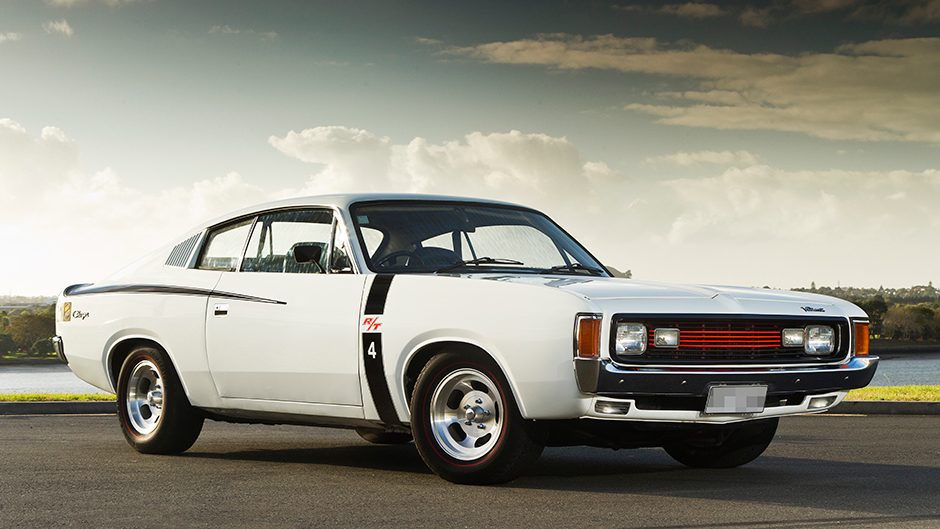
What killed the continued development of the Chargers and other Aussie muscle cars was the world’s first oil crisis and the following fuel price shocks. People began to shy away from big cars. Chargers that had previously been selling well suddenly grew roots in the showroom and became dust magnets. Chrysler Australia failed to adapt to the new market demands and closed its manufacturing facilities in 1984. The E49 Charger was way beyond my reach during the 70s. I regarded it then as a rare and exotic car, and still do. Unfortunately nothing has changed in 40 years and it’s still out of my reach financially.
Re-Charged
My first job was working for SM Motors, a Chrysler dealership in Wellington. Being young, clueless and of little real use, one of my tasks was to collect cars from the Todd assembly plant in Petone. Unfortunately, this experience opened my eyes to the horrible reality of New Zealand assembled cars. Almost every vehicle I picked up from the plant had to then be delivered to the nearby panel repair shop. I still remember the panel beaters walking around the vehicles tut-tutting at the appalling assembly quality. Their job was to rectify all the body defects from the factory. Often doors had to be re-hung, panels had to be repainted, boot lids had to be re-aligned and so on. Todd Motors were resigned to this process and even had an agreed amount they would pay out on each vehicle without needing quotes. I remember a reprimand I received from the sales manager. A customer had arrived in the showroom who I recognised as being the new owner of the Charger I had just driven back from the assembly plant. I ‘helpfully’ showed him his new baby, which was parked out back. The elated customer soon plunged back to earth after he spotted a series of glaring assembly faults and stomped back into the showroom to protest loudly. After the sales manager offered excuse after excuse to appease the customer, his attention then focused on me. I received strict instructions never to show a customer a new car again until it had come back from the panel beaters.


